Preah Khan may very well be Cambodia’s most atmospheric temple, hidden in the thick jungle of the Preah Vihear province. Royal palace and worship place dating back to the 9th century, it recalls the Bayon and Ta Prohm temples in Angkor. If one makes the effort to reach it, one will be rewarded by majestic ruins with hardly any other visitors, far from the crowds of Siem Reap.
The rotating wheels of our scooter are taking us deeper into the isolated and barren South West corner of the Preah Vihear province in Cambodia. Although it is still early, the sun burns mercilessly our overheated bodies as we leave the village of Sra’aem, a few miles south of Preah Vihear, Cambodia’s most disputed temple bordering Thailand. We are on our way to a temple that hardly ever sees any visitors as it is only reachable by dirt roads riddled with potholes: Preah Khan at Kompong Svay (not to be mistaken for the Preah Khan temple of Angkor), Cambodia’s largest temple complex that has only recently emerged from the thick jungle.
After 130 kilometres on a quiet asphalt road on which we occasionally pass carriages with crops pulled by cows, buffaloes or tractor engines we eventually reach the turn of the bumpy dirt road that leads to one of Cambodia’s most isolated temple complexes. Preah Khan is located another 30 kilometres further away. At an average speed of 15 kilometres per hour to avoid 1.5-metre deep potholes that would put a hard stop to our adventure, it is not before a while that we reach the 9th-century Elephant Temple (Prasat Preah Damrei). The small pyramid temple used to be guarded by four massive stone elephants at each corner. Only two remain as the others are exhibited at the National Museum of Phnom Penh and the Guimet Museum in Paris. Looting or preservation? The question can be disputed, and as a matter of fact, the elephants have been protected from smugglers and erosion.
Following the banks of the huge rectangle reservoir, taking a narrow side path leads us to an island on which the Preah Thol sandstone shrine rises above the forest, crossing the 5-kilometre long moat that surrounds the main temple complex. Past the giant moat we stumble upon the Prasat Preah Stung temple where the main tower displays the four giant stone-carved faces of King Jayavarman VII facing the four cardinal points with his mysterious smile, a reminder of the Bayon temple of Angkor.
Jayavarman VII, the builder of Angkor is paramount to the construction of the main temple of Preah Khan, Prasat Bakan. While the Khmer capital Angkor was occupied by the Chams in the 12th century, he would have left to live in current Vietnam, the country of his invaders. There, he studied the Chams military techniques before returning and creating his own army, trained in secrecy in the jungle of Preah Khan. The neighbouring iron mines allowed him to arm his soldiers. Once ready, he marched on Angkor where he defeated the Chams and freed his kingdom. He became King Jayavarman VII, and moved his capital back to Angkor in 1181. Prasat Bakan remained the second capital of the Angkor kingdom during his reign.
Until now we still haven’t seen a single soul but for an old man greeting us at the foot of the Elephant Temple. The isolated location adds an extra dimension: no souvenir stalls, no restaurants nor ticket booths. More than a visit, it is an adventure, far from the crowds of Angkor. So far that looters have been at ease to blow up certain parts and take away precious statues and stone carvings. Clearly the government has not enough money to restore the site but at least a few young men guard the path leading across the internal moat protecting the heart of the temple complex. Insisting on it one of them follows us discreetly as we walk on the massive stone causeway, elevated above the grass. We enter the Dharmasala (the house of fire), a type of building only found in temples built in the 12th-century under Jayavarman VII’s rule. With its thick walls, a tower on its west end and a window facing south, it may have been a rest house for travellers or a sanctuary to keep the sacred fire going for rituals. 121 of these structures were lining the roads leading to Angkor, according to an inscription that can be found here.
Lush vegetation and large trees provide a welcome shade as we explore Prasat Bakan, the most sacred temple of all. Locals still make offerings here, but from the young men following us to make sure we will not leave with any precious stones, there is no one to be seen. The smiling apsaras seem to be dancing with the roots of the strangler fig trees, bathed by the sun. Bas-reliefs appear in the middle of a pile of rubble like if they were lifted by vegetation. The heads of the naga rise from the grass.
We make our way back to our scooter as we have to conquer another excruciating 70 kilometres on a dirt road before reaching the asphalt road, still 80 kilometres from Siem Reap before night falls. Wooden shacks and small settlements are scattered along these trails where one can grab some food or buy gas in 1.5-litre water bottles. Occasionally, we come across smiling kids on oversized bicycles slaloming around potholes, roaming chickens, buffaloes and a few motorbikes.
Preah Khan is a demanding temple! Remote, it is tough to get to as road conditions are far from ideal. This gives it an adventurous edge, and being able to enjoy such a rich and beautiful temple complex alone is a priceless experience.
Claire & Marcella
Travel tips:
- The excellent National Museum of Cambodia in Phnom Penh displays certain bas reliefs and stone carvings from this site.
- It is recommended to join a tour from Siem Reap to visit Preah Khan. Getting there on your own is feasible by scooter or dirt bike, and it is quite a challenge and shouldn’t be attempted during the rainy season. To rent a reliable scooter, refer to Green Cycle Inn. Guided tours to Preah Khan by bus are also offered here.
- Refer to the interactive map below to plan a multi-day adventure from Siem Reap to discover Preah Viehar and Preah Khan.
- Check out this interactive map for the specific details to help you plan your trip and more articles and photos (zoom out) about the area!
Like it? Pin it!
Don’t know where to start? Get inspired:



























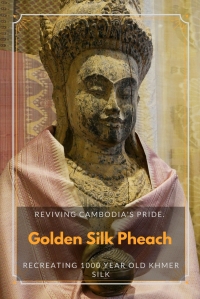
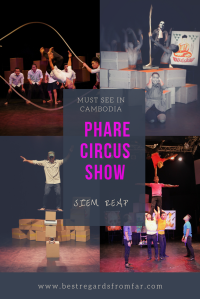
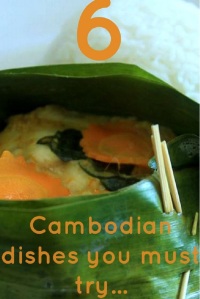

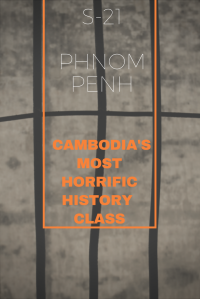
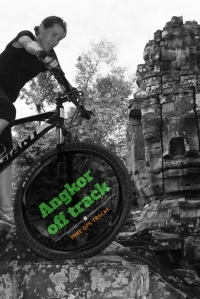
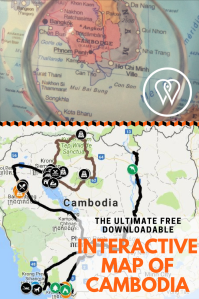
Just amazing. What a stunning place. I didn’t visit this temple but did several others.
Thanks, it is truly magical there! Which temples did you visit?
Great post, enjoyed reading this !
Thanks Megala, happy you enjoyed it 🙂 Based on what you write about, you may want to check out our articles entitled « a taste of Cambodia » and « a taste of Thailand ». We love Indian food and would love to write about « a taste of India »!